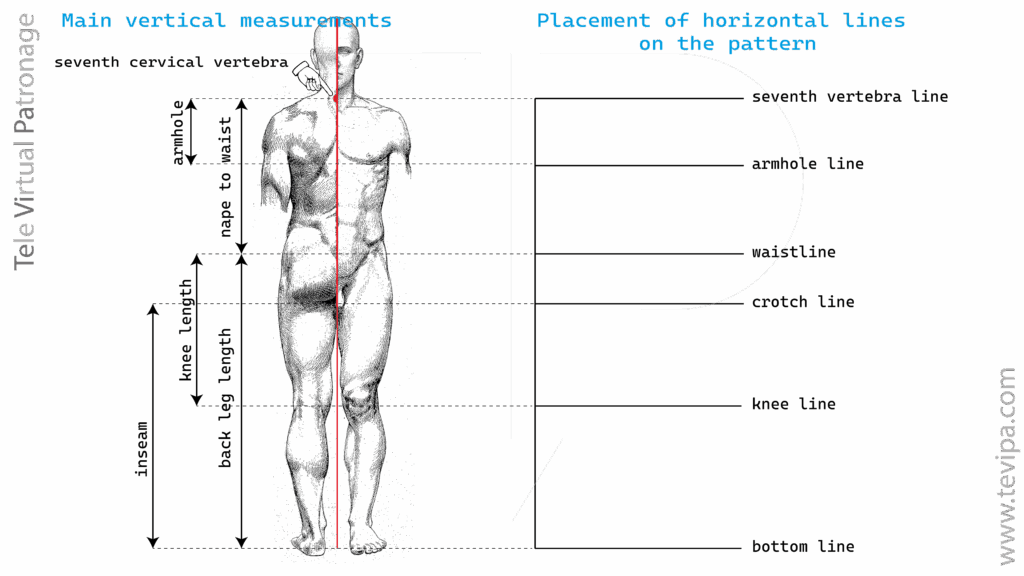Originally published on March 10, 2013

Measurements 1
Main Vertical Measurements of the Slopers

Introduction
Before starting any fashion-related project, you need accurate body measurements. In this post, we focus on the main vertical measurements of the human body. Moreover, in future posts, we will cover horizontal and complementary measurements, the drop, different body shapes, and guidelines for analyzing and customizing measurement charts.
Vertical vs horizontal measurements
Vertical measurements are taken perpendicular to the floor, while horizontal measurements run across the body. Today, our primary focus is on vertical measurements; measurements like arm length or Stature are considered secondary and discussed later.
Starting point: seventh cervical vertebra
Where do you begin measuring, and which point is furthest from the ground in a pattern? Many methods reference the shoulder seam or shirt collar However, it is essential to use an accurate reference: the highest point of the pattern corresponds to the seventh cervical vertebra (also known as the prominent vertebra).
We will draw a straight line starting at the seventh cervical vertebra. This line will represent the spine. We will call it the mid back line.
1. Armhole or Scye depth
This determines the armhole line. Although crucial in both men’s and women’s patterns, it can often be calculated proportionally and is therefore omitted from many measurement tables. To measure, wrap the tape under the armpits with arms relaxed and ensure it’s levelled. The intersection with the spine marks the depth, measured up to the seventh vertebra along the spine.
2. Length from the nape to waist
This defines the waistline. Wrap the tape around the narrowest part of the waist and measure from the seventh vertebra down to the spine intersection. This waistline is not parallel to the floor, as it varies when measured from front, back, or side.
3. Crotch Rise
Calculated as the leg back length minus the inseam length. The depth is measured from the floor up to the crotch (perineum). Alternatively, one can measure seated—from waist level down to the chair seat—though this may vary by about 1–2 cm.
4. Knee Height
Measure from the intersection of the waistline and spine to the knee (Popliteal fossa), with the tape measure always perpendicular to the floor. This is key to the design of trousers.
5. Full leg length back
Measure from the intersection of the waistline and spine to the floor, perpendicular to it.
